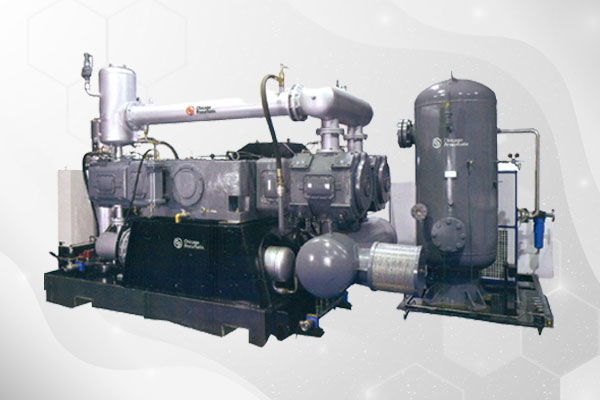Industrial air compressors are the backbone of countless operations, driving efficiency and productivity across industries. Yet, without proper care, these machines can face unexpected breakdowns, costly repairs, and reduced lifespan. Preventive maintenance isn’t just a good practice—it’s essential for keeping compressors running smoothly and avoiding downtime.
As technology evolves and demands grow, 2025 brings new challenges and opportunities for maintaining industrial air compressors. From routine inspections to advanced monitoring tools, staying ahead with a solid maintenance plan ensures optimal performance and long-term savings. Businesses that prioritize preventive care not only protect their investments but also enhance overall operational reliability.
Why Preventive Maintenance Is Crucial for Industrial Air Compressors
Preventive maintenance ensures industrial air compressors operate efficiently and reliably. It helps reduce downtime by identifying potential issues before they escalate into major failures. Neglecting maintenance often leads to unplanned operational halts, higher repair costs, and productivity losses.
Regular servicing extends equipment lifespan by minimizing wear and tear. Tasks like checking filters, lubricants, and electrical connections prevent system degradation. For instance, clogged filters can cause overheating, resulting in severe damage if left unchecked.
Energy efficiency improves with properly maintained compressors. Clean components and optimal settings reduce energy consumption, which accounts for up to 70% of operating costs. Businesses following an Industrial Air Compressor Preventive Maintenance Guide, such as those offered by Fluid-Aire Dynamics, benefit from actionable insights that help maintain efficient systems.
Safety risks decrease with consistent care. Faulty compressors can lead to hazardous conditions such as high-pressure leaks or explosions, posing threats to operators and facilities. Preventive maintenance creates a safer working environment by addressing such risks proactively.
Comprehensive upkeep boosts reliability, ensuring consistent production outputs. Advanced tools like predictive analytics and system monitoring enable accurate problem detection, aligning maintenance routines with modern industry demands in 2025.
Key Maintenance Tasks to Minimize Downtime
Routine servicing of industrial air compressors mitigates the risk of operational disruptions. Key tasks focus on addressing both critical and routine components to ensure performance and reliability.
-
Inspect And Replace Filters
Contaminated filters reduce efficiency and strain the compressor’s motor. Regular inspection identifies blockages, and replacements are typically required every 1,000 to 2,000 operating hours depending on usage intensity.
-
Monitor Lubricant Levels
Maintaining optimal lubricant levels minimizes overheating and reduces wear on moving parts. Change lubricants after every 4,000 to 8,000 operating hours, considering the manufacturer’s guidelines.
-
Check For Leaks
Air leaks increase energy consumption and operational costs. A thorough inspection of connections and valves detects hidden leaks, conserving compressed air.
-
Clean Cooler Systems
Deposits in cooler systems compromise heat dissipation. Regular cleaning prevents excessive temperatures, prolonging component lifespan.
-
Inspect Drive Belts
Wear on drive belts results in reduced efficiency or component failure. Identify signs of fraying or looseness during routine checks, and replace worn belts immediately.
-
Drain Condensate Traps
Accumulated moisture in condensate traps leads to corrosion. Draining these traps daily eliminates excess water and protects internal components.
-
Test Safety Shutdown Systems
Faulty safety systems endanger operations. Testing pressure relief valves and automatic shutdown features ensures functionality during emergencies.
These tasks, part of an Industrial Air Compressor Preventive Maintenance Guide, safeguard production and minimize downtime. Businesses that adopt structured maintenance cycles achieve greater reliability in operations, aligning with industry standards like those promoted by Fluid-Aire Dynamics.
Tips for Monitoring Compressor Efficiency Over Time
-
Track Energy Consumption
Measure power usage during consistent operational loads. Changes in energy consumption may indicate inefficiencies or system malfunctions. Advanced monitoring tools, like those recommended in the Industrial Air Compressor Preventive Maintenance Guide, help automate this process.
-
Evaluate Compression Ratios
Regularly check the compression ratio against the manufacturer’s specifications. Deviations can result from worn internal components or leaks, reducing system performance and increasing operating costs.
-
Analyze Temperature Readings
Monitor discharge and operating temperatures. Anomalies, such as excessive heat, typically signal clogged filters, restricted airflow, or inadequate lubricant levels.
-
Inspect Air Leakages
Detect and document leaks using ultrasonic detectors. Leaks significantly reduce efficiency, wasting compressed air and increasing energy expenses.
-
Monitor Pressure Drops
Measure system pressure at critical points. Persistent pressure drops often point to blockages in filters, valves, or piping systems, necessitating immediate attention to maintain efficiency.
-
Review Maintenance Logs
Analyze past service records to identify recurring issues. Maintaining organized documentation aids in forecasting and scheduling maintenance tasks based on historical trends.
-
Leverage Predictive Analytics
Use predictive maintenance software to analyze historical and real-time data. Innovations in tools supported by companies like Fluid-Aire Dynamics enable predictive insights, reducing operational disruptions.
Common Issues to Address in Routine Maintenance Checks
Routine maintenance of industrial air compressors identifies and resolves underlying issues that may impair performance. Below are common problems addressed during inspections:
-
Clogged Air Filters
Dirty filters reduce airflow, increase energy consumption, and strain the compressor. Inspecting and replacing air filters according to the Industrial Air Compressor Preventive Maintenance Guide ensures optimal airflow and efficiency.
-
Oil and Lubricant Degradation
Aging lubricants lose their viscosity, causing increased wear on internal parts. Checking oil levels and replacing degraded lubricants maintains smooth operation and prevents costly repairs.
-
Air Leakages
Leaks at connection points, seals, or hoses waste energy and decrease system output. Identifying leaks using ultrasonic detectors minimizes energy losses and improves operational reliability.
-
Overheating
Blocked coolers or insufficient ventilation cause temperature spikes, reducing compressor efficiency. Cleaning cooler systems and ensuring proper airflow prevent overheating during operations.
-
Excessive Vibration
Loose or damaged components create vibrations, accelerating wear. Routine inspections of mounting bolts and drive assemblies stabilize compressor performance.
-
Belt Wear and Misalignment
Worn belts, cracks, or misalignments affect power transmission. Inspecting drive belts regularly and adjusting tension extends their lifespan.
-
Draining Condensate Traps
Neglected condensate traps lead to moisture buildup, risking system corrosion. Draining these traps prevents damage caused by excess moisture in the compressor.
-
Malfunctioning Safety Systems
Faulty emergency shutdowns compromise safety. Testing safety systems during routine checks ensures compliance and protects personnel.
Following these procedures aligns with the Industrial Air Compressor Preventive Maintenance Guide to enhance reliability and extend equipment life.
How Proper Lubrication Extends Equipment Longevity
Proper lubrication reduces friction and wear on industrial air compressor components, significantly extending equipment life. It minimizes surface damage to critical parts, such as bearings, rotors, and gears, ensuring efficient operation over time. Lubricants also reduce heat generation, preventing overheating that may lead to system failures.
Regular checks of lubricant levels help maintain optimal performance, avoiding breakdowns caused by insufficient oil. Following recommendations in resources like the Industrial Air Compressor Preventive Maintenance Guide ensures appropriate lubricants are used for specific compressor models.
Contaminant control is another vital aspect of lubrication. Dirt and debris in the lubricant increase the risk of abrasion, leading to rapid wear. Effective filtration systems protect lubricants, prolonging service intervals and maximizing operational reliability.
Scheduled lubricant replacement based on operating hours or manufacturer guidelines further enhances performance. Heeding guidance provided by Fluid-Aire Dynamics can help businesses adopt best practices for maintaining lubrication systems efficiently. Proper preventive care of lubrication significantly increases the durability of industrial air compressors, reducing long-term costs.
Tools and Technologies Supporting Maintenance in 2025
Preventive maintenance for industrial air compressors remains a cornerstone of operational efficiency and equipment longevity. As industries evolve, leveraging advanced tools and technologies will be critical to maintaining optimal performance. Predictive analytics, IoT-enabled monitoring systems, and automated diagnostics are transforming how businesses approach maintenance, offering real-time insights and proactive solutions.
By integrating these innovations into their maintenance strategies, companies can stay ahead of potential issues, reduce downtime, and maximize the value of their investments. Structured maintenance plans, combined with cutting-edge tools, ensure that industrial air compressors continue to meet the demands of modern production environments while minimizing costs and risks.

